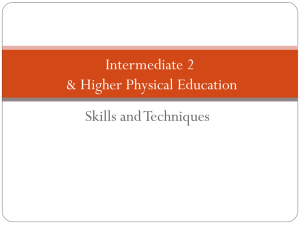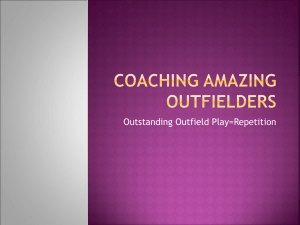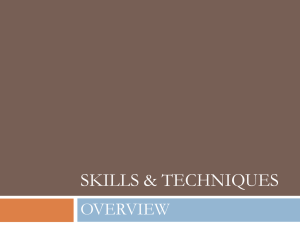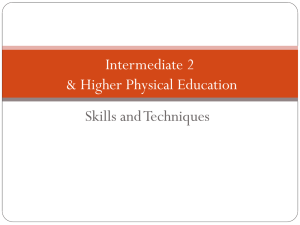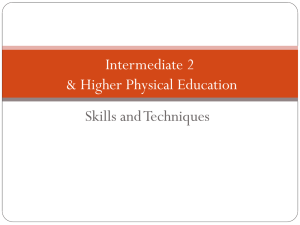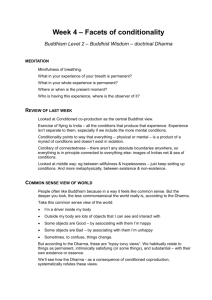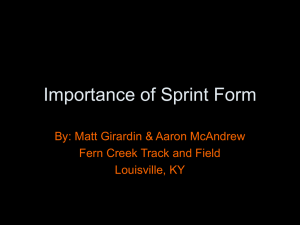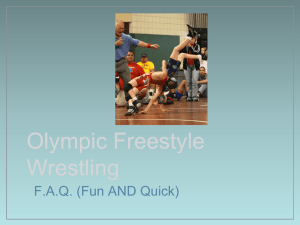Conditioned Games
advertisement
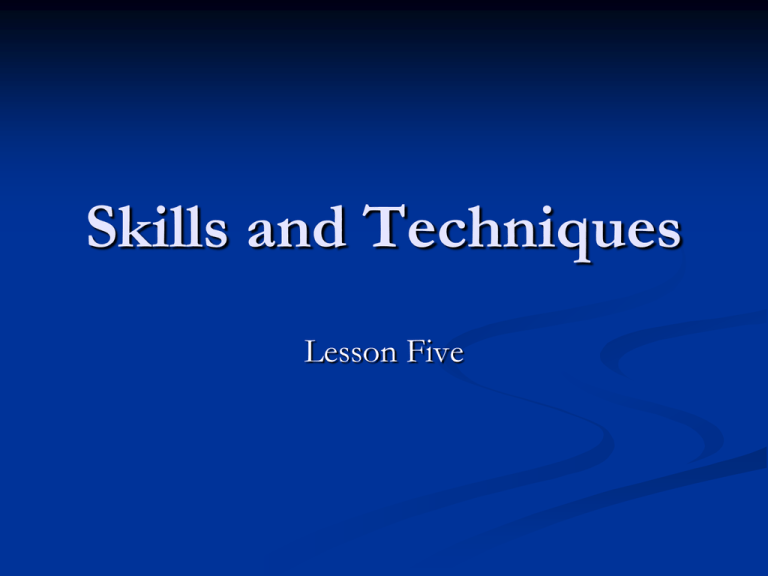
Skills and Techniques Lesson Five Stages of Skill Learning Methods of Practice Planning Stage Shadow Practice Practice Stage Repetition Drills Combination Drills Pressure Drills Automatic Stage Principles of effective practice Feedback Work/rest ratio Progression External VERBAL feedback. Internal INTRINSIC feedback Work/rest ratio Progression External VERBAL feedback. Internal INTRINSIC feedback Methods of Practice Stages of Skill Learning Methods of Practice Principles of effective practice Feedback Practice Stage Pressure Drills Work/rest ratio Progression External VERBAL feedback. Internal INTRINSIC feedback Pressure Drills Once the movement patterns of the overhead clear have been established and your performance of the skill has begun to move towards the automatic stage it is important to increase the pressure to ensure the demands of practice are specific to your performance level and that practice becomes increasingly more game like. Pressure can be gradually increased as your level of performance increases. The chances of a skill becoming automatic are greatly increased after pressure training. Initially we used repetition pressure drills which required you to repeatedly perform overhead clears while under pressure from two feeders. Pressure was increased by decreasing the time interval between feeds forcing you to move to and from base quicker – reducing the time you had to move into position. As your performance improved we progressed to using combination pressure drills, which required you to perform an overhead clear along with a net shot in pressured situations. Stages of Skill Learning Automatic Stage Methods of Practice Conditioned games Principles of effective practice Feedback Work/rest ratio Progression External VERBAL feedback. Internal INTRINSIC feedback Automatic Stage At the automatic stage the majority of subroutines have become automatic. They have been grooved to muscle memory. As a result, little attention is paid to them. During the overhead clear this will mean that you track the path of the shuttle, adopt a side on stance with your weight on your back foot – transfer your weight forward, impact with shuttle above racquet arm – bring racquet down across body and recover to base. Preparation Action Recovery As you are able to perform the subroutines of the overhead clear automatically you are able to pay closer attention to the flight path of the shuttle and where on your opponents court the shuttle lands. To ensure practice is specific to your skill level and realistic to the unpredictable nature of badminton conditioned games are the most effective way of further refining your overhead clear. Conditioned games can take various forms, often they are used to provide one player with an advantage or rules are adapted to emphasis particular skills. Methods of Practice Stages of Skill Learning Automatic Stage Methods of Practice Conditioned games Principles of effective practice Feedback Work/rest ratio Progression External VERBAL feedback. Internal INTRINSIC feedback Conditioned Games Conditioned games are essentially adapted forms of the activity. They can take various forms. Often they are used to provide an individual or team with an advantage over their opponents, this makes achieving tasks easier. Conditioned games may also involve certain adaptations to the rules of the game to emphasise the particular skills that you have been working on developing. Give Three Examples of conditioned games
